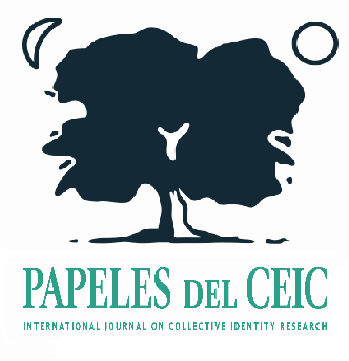Geographies of disasters. Order and disorders in the management of "natural" disasters
##plugins.themes.bootstrap3.article.main##
##plugins.themes.bootstrap3.article.sidebar##
Published
11-09-2017
Sandrine Revet
Abstract
"Natural" disasters, their prevention and their management have been raised as an object of international attention since the 1970's. The international social world of disasters has elaborated dispositives in order to put in order the anticipated chaos generated by disasters. This ordering process notably consists in trying to match spaces, roles and identities. When a disaster strikes on a territory, inhabitants become "affected people" when they pass through the tent where there are given this status, and then "displaced people" when there are conveyed in the truck that drives them to their new places. These dispositives are elaborated on ways of thinking identities in situation of crisis strongly linked to spatial representations. The ethnographic inquiry realized on different sites where dispositives of disaster management are put in place in Latin America shows that the coincidence between spaces, roles and identities are far from systematic and that people often have the possibility to reintroduce a certain level of critique, taking their distance with the roles they were attributed and discussing the geography of order. The paper focuses on these moments when this critique is formulated, during disaster simulation exercises or real disasters.
##plugins.themes.bootstrap3.article.details##
Keywords
territory, place, disaster, identity, simulation, preparadness
Section
Research Articles
Papeles del CEIC is distributed under the licence Creative Commons Reconocimiento-NoComercial-SinObraDerivada 3.0 España (CC BY-NC-ND 3.0 ES)
Usted es libre de:
- copiar, distribuir y comunicar públicamente la obra
Bajo las condiciones siguientes:
- Reconocimiento — Debe reconocer los créditos de la obra de la manera especificada por el autor o el licenciador (pero no de una manera que sugiera que tiene su apoyo o apoyan el uso que hace de su obra).
- No comercial — No puede utilizar esta obra para fines comerciales.
- Sin obras derivadas — No se puede alterar, transformar o generar una obra derivada a partir de esta obra.
Entendiendo que:
- Renuncia — Alguna de estas condiciones puede no aplicarse si se obtiene el permiso del titular de los derechos de autor
- Dominio Público — Cuando la obra o alguno de sus elementos se halle en el dominio público según la ley vigente aplicable, esta situación no quedará afectada por la licencia.
- Otros derechos — Los derechos siguientes no quedan afectados por la licencia de ninguna manera:
- Los derechos derivados de usos legítimos u otras limitaciones reconocidas por ley no se ven afectados por lo anterior.
- Los derechos morales del autor;
- Derechos que pueden ostentar otras personas sobre la propia obra o su uso, como por ejemplo derechos de imagen o de privacidad.
- Aviso — Al reutilizar o distribuir la obra, tiene que dejar bien claro los términos de la licencia de esta obra.
The author can use his/her article freely always indicating that it has been published in Papeles del CEIC. International Journal on Collective Identity Research. Any re-edition of the article must be approved by the journal editorial team.

